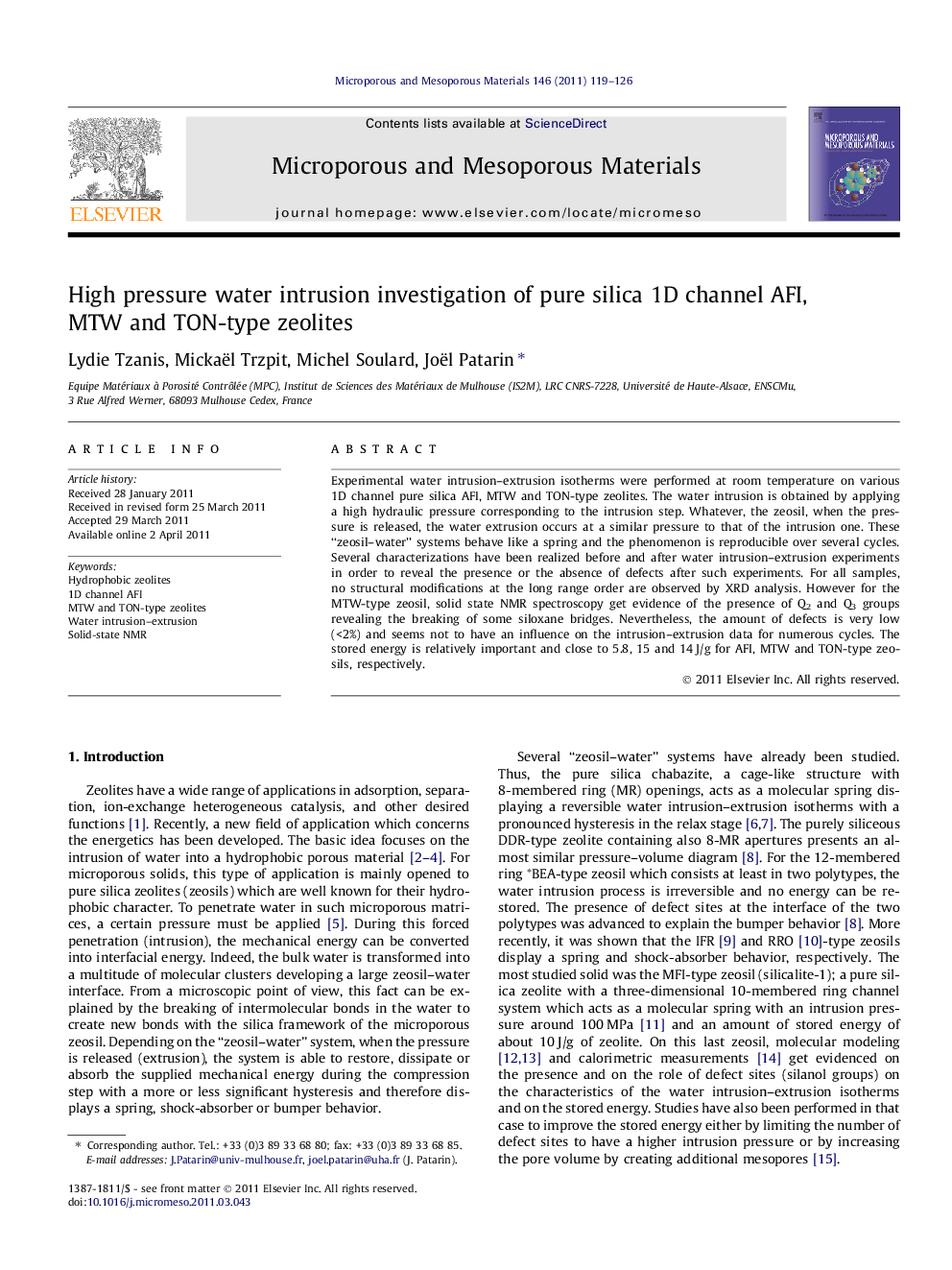| Article ID | Journal | Published Year | Pages | File Type |
|---|---|---|---|---|
| 74189 | Microporous and Mesoporous Materials | 2011 | 8 Pages |
Experimental water intrusion–extrusion isotherms were performed at room temperature on various 1D channel pure silica AFI, MTW and TON-type zeolites. The water intrusion is obtained by applying a high hydraulic pressure corresponding to the intrusion step. Whatever, the zeosil, when the pressure is released, the water extrusion occurs at a similar pressure to that of the intrusion one. These “zeosil–water” systems behave like a spring and the phenomenon is reproducible over several cycles. Several characterizations have been realized before and after water intrusion–extrusion experiments in order to reveal the presence or the absence of defects after such experiments. For all samples, no structural modifications at the long range order are observed by XRD analysis. However for the MTW-type zeosil, solid state NMR spectroscopy get evidence of the presence of Q2 and Q3 groups revealing the breaking of some siloxane bridges. Nevertheless, the amount of defects is very low (<2%) and seems not to have an influence on the intrusion–extrusion data for numerous cycles. The stored energy is relatively important and close to 5.8, 15 and 14 J/g for AFI, MTW and TON-type zeosils, respectively.
Graphical abstractFigure optionsDownload full-size imageDownload as PowerPoint slideHighlights► Synthesis of AFI, MTW and TON-type zeosils. ► Water intrusion–extrusion experiments on 1D channel zeosils. ► Energy storage, spring behavior. ► Direct evidence of defect sites by 1H–29Si CP MAS NMR.
